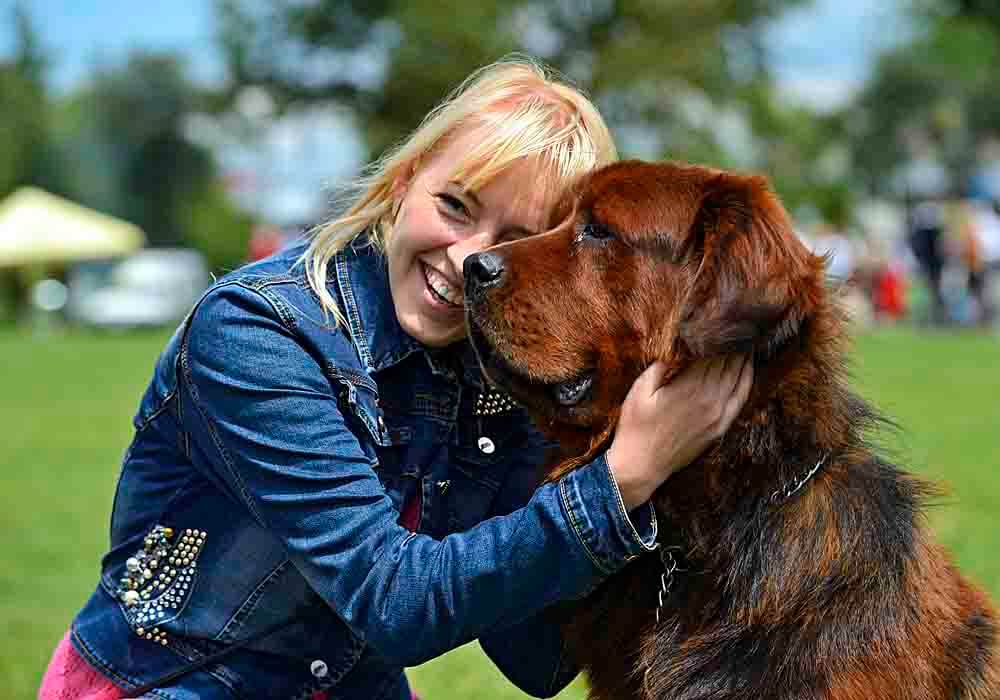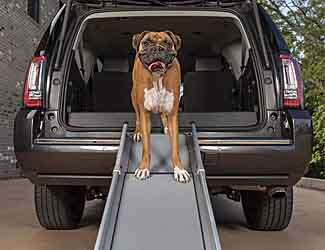Tibetan Mastiff Exercise Needs
How Much Do They Need? What's The Best Type?
by Ken Alden
Tibetan mastiffs, like all dogs, need to stay active to be healthy. It’s important to know the Tibetan mastiff exercise needs, as they would rather curl up in bed with you all day than run around the yard or chase squirrels. So, while they were once hardworking herding dogs; now, they must be encouraged to exercise for their well-being.
Tibetan mastiffs require daily exercise to remain healthy and fit. They don’t need rigorous activity due to their large size and somewhat lazy personality. Moderate exercise for a short time every day is enough to meet a Tibetan mastiff’s exercise needs.
There’s no doubt that you want to provide the best possible care for your Tibetan mastiff. The rest of this article will discuss how to care for your mastiff’s exercise needs to allow them to live their best life under your care.
Pro-tip: Ever try lifting a Tibetan Mastiff? Their weight can hurt not only your back but their joints when they hop down from cars, sofas or even your bed. To protect your back and theirs check out the best Mastiff ramps on Amazon.com now.

Do Tibetan Mastiffs Need a Lot of Exercise?
The Tibetan mastiff is a large dog that can grow to 180 pounds (81.65 kg). Their large size and thick fur can cause them to overheat if exposed to too much physical activity. So, what exactly are the Tibetan mastiff exercise needs?
Tibetan mastiffs don’t need a lot of exercise. Generally, a mastiff requires low to medium-intensity exercise daily; anywhere from 30 minutes to one hour a day is sufficient. Some key factors should be considered when determining how much exercise your Tibetan mastiff should get, including its age.
I’ll go over the different factors that determine how much exercise your mastiff needs in the following paragraphs.
Your Tibetan Mastiff’s Age
Your dog’s age is a significant factor that determines how much exercise is necessary, as puppies and adult dogs don’t require the same amount of exercise to be healthy.
Pro-tip: Tibetan Mastiff anxiety, aggression, destructive chewing, jumping up, fearfulness, and other behaviors can be controlled with the right training program.
Here’s a great course that addresses these issues along with many other dog training basics: Check it out now!
A Puppy Tibetan Mastiff
Puppy Tibetan mastiffs (under 12 months) are usually okay with 30-40 minutes of exercise daily. Puppies are more active; they get their daily exercise needs primarily through play. If your puppy is restless, you can split the exercise sessions throughout the day.
The Tibetan mastiff is a giant breed of canine. Therefore, it’s essential to look after its bone and joint development as it grows. Overworking your puppy could lead to permanent damage. You can read these care tips for Tibetan mastiff puppies to know more.
An Adult Tibetan Mastiff
An adult Tibetan mastiff requires an average of one hour of exercise daily. Owners must find a balance between diet, exercise, and relaxation. Prolonged periods of rigorous exercise could do more harm than good to a Tibetan mastiff. Additionally, it’s best to avoid exercise in the hot sun and keep the mastiff hydrated for optimal health.
Adult Tibetan mastiffs can quickly become overweight if care is not taken. Their lazy personality means their owners must be vigilant about making exercise a routine. Not exercising can lead to many issues for the Tibetan mastiff, including:
- Obesity
- High blood pressure
- Heart disease
- Joint problems
Using a dog walking app like ROVER can encourage dog owners.
Pro-tip: Tibetan Mastiff's (and their owners) love dog crates…and for good reasons. Crates keep dogs from mischief while you're away, are perfect for house training, for traveling by car, and provide the dog a place to de-stress. Check out the best Mastiff crates on Amazon.com now.
Your Tibetan Mastiff’s Gender
Male mastiffs are larger in size and lazier than females. Therefore, a male Tibetan mastiff might require more encouragement to exercise. Spaying or neutering your dogs will make them calmer and more agreeable.
Female mastiffs are different, especially pregnant mastiffs. A pregnant Tibetan mastiff will require more rest and physical activity. Although the pregnant Tibetan mastiff needs a daily exercise routine, it doesn’t have to be an hour every day. Your vet can advise based on how far along the pregnant mastiff is.
Your Tibetan Mastiff’s Climate
Tibetan mastiffs come from Tibet, of course, but they could have originated from neighboring India, Nepal, and China. Their original habitat in the Himalayan mountains means they’re genetically acclimatized to colder weather.
Their thick fur keeps them insulated. Too much activity or exercise in the heat can cause them to overheat and faint. If the weather is very hot where you live, consider taking your Tibetan mastiff out at night or very early to avoid the high temperatures.
Exercise Ideas for Tibetan Mastiffs
Here are some suggestions on how to get your Tibetan mastiff going:
- Walking: Tibetan mastiffs are curious and love to explore, so an evening walk will spark their imagination. Tibetan mastiffs are naturally heavy, and avoid jogging or running with them. It’s recommended to use a leash while walking; Tibetan mastiffs can be scary to some people.
- Swimming: Not all Tibetan mastiffs enjoy swimming, as their heavy coats can be uncomfortable when wet. Despite this, it’s a good idea to have your mastiff try swimming, as it’s an excellent way to exercise.
- Play in the snow: If you live where it snows, make the best of it. Playing in the snow is in a mastiff’s blood. 30 minutes of jumping around is sufficient exercise, depending on your dog’s specific needs.
- Tug of war: Let your Tibetan mastiff show you how strong he is. Playing tug of war with a chew toy or rope will be great fun for both of you.
How Long Should I Walk My Tibetan Mastiff?
You should walk your Tibetan mastiff for 30 minutes to one hour a day. However, this depends on your mastiff’s age, gender, and the outside temperature. In extremely hot temperatures, you should walk your mastiff less, as their thick coats can cause them to overheat.
Knowing how long to walk your mastiff is important, but first, you have to get your dog motivated enough to go on a walk. I’ll go over the best ways to do this in the next section.
How To Motivate Your Tibetan Mastiff To Exercise
Chances are your Tibetan mastiff is more powerful than you, so don’t attempt to drag your enormous dog to go and exercise, as the dog might end up walking you. The Tibetan mastiff is somewhat lazy but endlessly loyal and loving. Here are some ideas to motivate your canine friend to move his doggy body:
- Offer your mastiff a treat. Offering a doggy treat like the delicious Blue Buffalo Health Bars (available on Amazon.com) during or after a walk will encourage your Tibetan mastiff. Make sure the treats are healthy. Otherwise, you’re taking one step forward and two steps back.
- Enroll your mastiff in puppy kindergarten. Puppy schools help busy dog parents train their puppies in a safe environment. The puppy kindergarten gets your dog used to an exercise routine while he’s still young.
- Use a dog walker. Not everyone can handle the gigantic Tibetan mastiff. If you find a professional dog walker, your dog will make new friends and get all the exercise he needs.
- Bring some toys along with you. Just when your Tibetan wants to lie down after only 5 minutes of exercise, surprise him with his favorite toy and see him perk right up.
- Be positive. Tibetan mastiffs are very attached to their owners, so like most dogs, they can sense moods. If you hate exercising with your Tibetan mastiff, he can feel that and would be reluctant to participate.
- Try again later. If your Tibetan mastiff refuses to exercise, just leave her be. Try again later or the next day. If your dog refuses to exercise for three or more days, call your vet to see if you should go in for a visit.
Tibetan Mastiff Exercise Needs...Conclusion
Tibetan mastiffs need exercise to be happy and healthy, but they don’t need as much exercise as other dogs. They enjoy different types of physical activities, especially when it’s cold outside.
However, it’s crucial not to overwork them. Their size and genetic makeup make them susceptible to bone fractures and joint problems, and they have a tendency to become overweight and significantly ill as a result. The safety of your Tibetan mastiff should always be the top priority.
Back To The TOP Of This Tibetan Mastiff Exercise Needs Page

About the Author...
Ken Alden, a dedicated Mastiff owner for over eight years, is acclaimed for his expertise in care, grooming, and training. Read more About Me and my dog Shadow.
- Mastiff Guide Home ›
- Tibetan Mastiffs ›
- Tibetan Mastiff Exercise Needs



